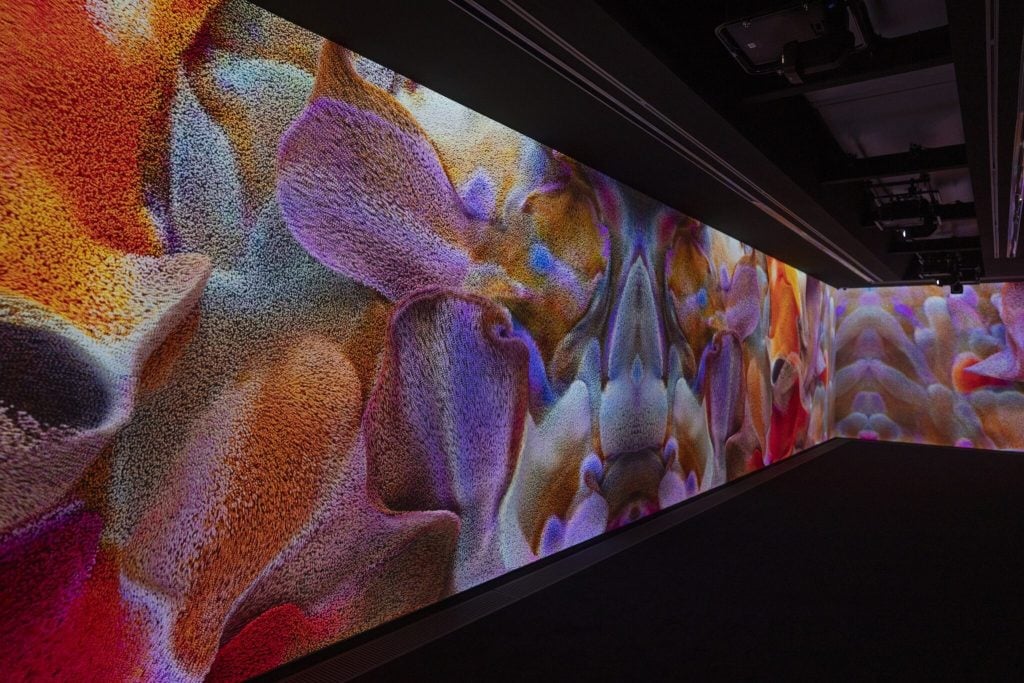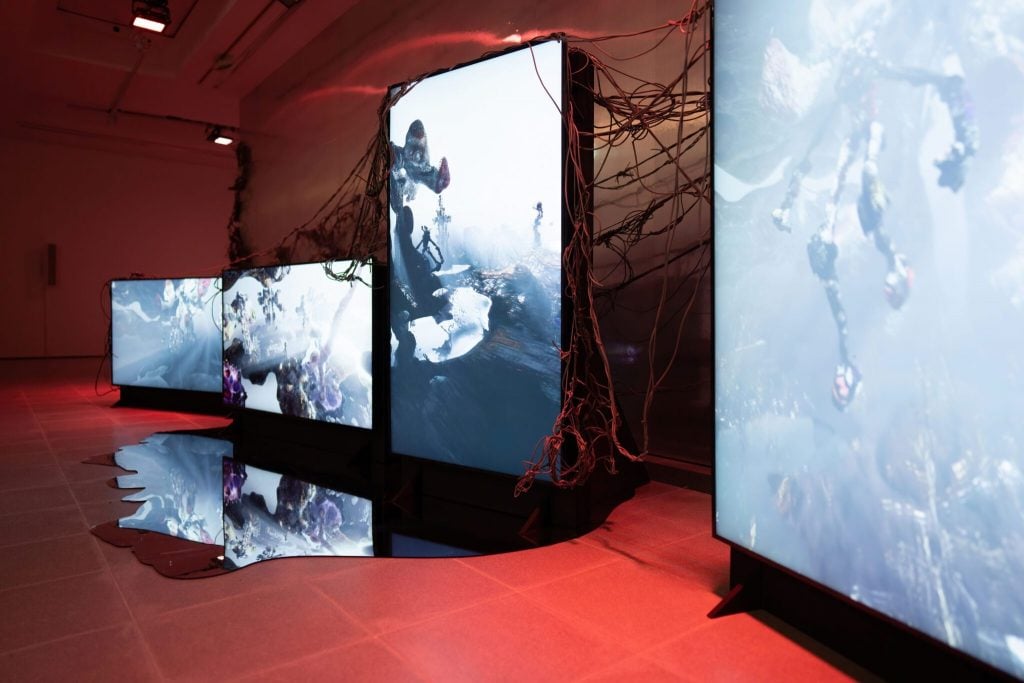
23 Dec Hans Ulrich Obrist on A.I., Video Games, and Rethinking the Art World in 2025
Source Credit: Content and images from Artnet News. Read the original article - https://news.artnet.com/art-world/hans-ulrich-obrist-ai-video-games-2025-2577710
In 2016, the Swiss art critic and curator Hans Ulrich Obrist was dubbed the most influential person in the art world for the second time in the ArtReview’s annual Power 100 list. Widely known as the “curator who never sleeps”, his mark on global arts and culture is indelible.
Most notably, Obrist has been the artistic director of London’s Serpentine Galleries for almost two decades, championing innovative art projects and providing a platform for established and emerging artists alike. Recently, Obrist has been exploring ways of bridging the gap between the art world and forms of digital creativity—including by declaring 2024 the “Year of A.I.” for the Serpentine.
Here, he looks back at 2024 and what he expects from the year ahead.

Refik Anadol, Echoes of the Earth: Living Archive, 2024. Installation view, Serpentine North. Photo: Hugo Glendinning. Courtesy Refik Anadol Studio and Serpentine
What moment or project stands out as a personal highlight of 2024?
For The Serpentine, it has been the year of A.I. We’ve been working [and experimenting] with A.I. for 10 years now with our technology department, so it’s not something we just started recently—it’s been building up for a long time. This year, we wanted to focus on images and sound in relation to A.I., so we had a solo exhibition for the artist Refik Anadol called “Echoes of the Earth: Living Archive”. It was in the Serpentine North Gallery, and then went to Seoul, where it is still on now.
What was the best show you saw in London in 2024?
It was very exciting to spend time at the Warburg Institute. I grew up in Kreuzlingen in Switzerland, where the German art historian Aby Warburg was hospitalised at Ludwig Binswanger’s neurological clinic. It’s where he wrote the famous Serpent Ritual. He read it for the first time to the other patients at the clinic, and as an adolescent, people would tell me all sorts of legends about Aby Warburg being there.
What are you looking forward to most in 2025?
Next year, we want to focus on video games at The Serpentine. We produced one last year with Gabriel Massan. It’s amazing that more than 3 billion people interact with video games today, which is more than a third of the world’s population. So, what used to be a pastime activity or something niche has become, in a way, what novels were to the 19th century or what cinema is for the 20th century. It’s also interesting how many artists right now have unrealised video games they want to do. We have this technology department, and with our curators and our head of technology, we have the infrastructure to produce these artists’ projects.

If you could see one change in the art world next year, what would it be?
Over the last couple of years, my colleagues and I have seen that more and more artists are interested in longer-duration projects. They no longer live deadline to deadline and are questioning the idea of event culture. So, I’m curious to see how institutions answer that as they have to somehow follow when art evolves and changes.
What is the one piece of advice you would give yourself at this time last year?
If I had known that the French novelist and critic Maryse Condé would no longer be with us at the end of 2024, I would have visited her again and spent more time with her. We met a couple of years ago and had conversations at Luma in Arles. She lived in the South of France, and we collaborated on a poster project. Maryse passed away in April this year. She was one of my favourite 20th-century writers.
In Crossing the Mangrove, she wrote: “How true! Life’s problems are like trees. We see the trunk, we see the branches and the leaves. But we can’t see the roots, hidden deep down under the ground. And yet it is their shape and nature and how far they dig into the slimy humus to search for water that we need to know. Then perhaps we would understand.”
Who is the art professional you have your eye on for 2025, and why?
Arpita Singh who is currently in a group show at the Barbican. She is a leading Indian painter and is now in her late eighties. We have a series at the Serpentine that gives visibility to pioneering practitioners whose work hasn’t been recognised enough. It’s like a protest against forgetting. She is an amazing painter and storyteller, and the fact that she’s never had a big museum show outside of India means we have our eyes on her for the Spring exhibition.
Source Credit: Content and images from Artnet News. Read the original article - https://news.artnet.com/art-world/hans-ulrich-obrist-ai-video-games-2025-2577710

